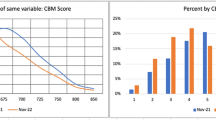Abstract
In this paper, we carry out an experimental analytics to show how much perfectly the conceptual mining framework is operable on re-discovering workflow process patterns and their enacted proportions from the workflow enactment event histories logged in a format of XES standardized schema. In principle, the framework must be able to properly handle all the workflow process patterns based upon the four types of control-flow primitives such as linear (sequential), disjunctive (selective), conjunctive (parallel), and loop (iterative) process patterns. The paper focuses on implementing an algorithmic mining framework only for discovering all the process patterns and their enacted proportions. To prove the functional correctness of the framework, we carry out an experimental mining and analytics on the real workflow instance enactment event histories of 10,000 workcases, and we finally visualize the mining and analytic artifacts and describe the implications of the results of the experiment.





Similar content being viewed by others
Notes
The authors’ research group has been developing the overall functionality of the workflow mining and analytical framework. Now, we have already implemented the core algorithms and applied them to obtain the experimental analytics results described in this paper.
Note that we assume the proportion of each out-going arc implies the proportional occurrence of the corresponding arc to be discovered from the workflow logs.
XWELL stands for XML-based workflow execution logging mechanism and language.
BPAF stands for business process audit format, which is supported by the Workflow Management Coalition (WfMC).
XES stands for extensible event stream, which is supported by the extensible event stream working group of the IEEE standard committee.
References
Casati, F., et al. (2002). Business process intelligence. Technical Report, HPL-2002-119, HP Laboratories Palo Alto.
Grigori, D., Casati, F., Castellanos, M., Dayal, U., Sayal, M., & Shan, M.-C. (2004). Business process intelligence. Journal of Computers in Industry, 53(3), 321–343.
van der Aalst, W. M. P., van Dongena, B. F., Herbst, J., Marustera, L., Schimm, G., & Weijters, A. J. M. M. (2003). Workflow mining: A survey of issues and approaches. Journal of Data & Knowledge Engineering, 47(2), 237–267.
Kim, K., Yeon, M., Jeong, B., & Kim, K. (2017). A conceptual approach for discovering proportions of disjunctive routing patterns in a business process model. KSII Transactions on Internet and Information Systems, 11(2), 1148–1161.
Park, M., & Kim, K. (2008). Control-path oriented workflow intelligence analyses. Journal of Information Science and Engineering, 24, 343–359.
Kim, K. H. (2005). Control-path oriented workflow intelligence analysis on enterprize workflow grids. In Proceedings of the international conference on semantics, knowledge, and grid, Beijing, China.
Kim, K. H., & Ellis, C. A. (2006). Workflow reduction for reachable-path rediscovery in workflow mining. In T. Y. Lin, S. Ohsuga, C.-J. Liau, & X. Hu (Eds.), Series of studies in computational intelligence: The foundations and novel approaches in data mining (Vol. 9, pp. 289–310). Springer.
BPI Challenge 2012, 2013, 2014, 2015, 2016, 2017, 2018, 4TU. Centre for Research Data. https://data.4tu.nl/repository/collection:event-logs-real.
IEEE. (2016). IEEE Standard for eXtensible Event Stream (XES) for achieving interoperability in event logs and event streams. In IEEE 1849–2016. https://doi.org/10.1109/IEEESTD.2016.7740858.
Park, M., & Kim, K. (2007). XWELL: A XML-based workflow event logging mechanism and language for workflow mining systems. Lecture Notes in Computer Science, 4707, 900–909.
zur Muehlen, M., & Swenson, K. D. (2011). BPAF: A standard for the interchange of process analytics data. Lecture Notes in Business Information Processing, 66, 170–181.
Acknowledgements
This research was supported by Basic Science Research Program through the National Research Foundation of Korea(NRF) funded by the Ministry of Education (Grant No. 2017R1A2B2010697).
Author information
Authors and Affiliations
Corresponding author
Rights and permissions
About this article
Cite this article
Kim, K., Lee, YK., Ahn, H. et al. An experimental mining and analytics for discovering proportional process patterns from workflow enactment event logs. Wireless Netw 28, 1211–1218 (2022). https://doi.org/10.1007/s11276-018-01899-z
Published:
Issue Date:
DOI: https://doi.org/10.1007/s11276-018-01899-z




